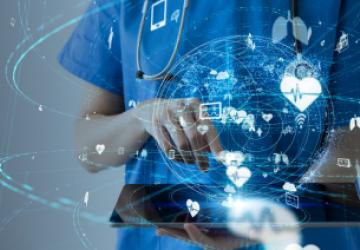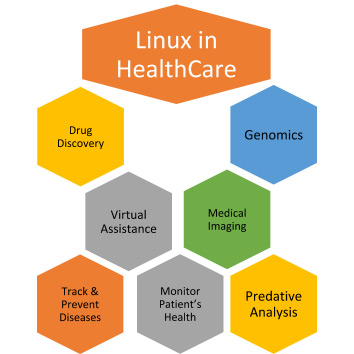Linux in Healthcare - Cutting Costs & Adding Safety

Healthcare domain directly deals with our health and lives. Healthcare is prevention, diagnosis, and treatment of any disease, injury, illness, or any other physical and mental impairments in humans. Emergency situations are often dealt with by the healthcare sector very frequently. With immense scope for improvisations, a thriving healthcare domain deals from telemedicine to insurance, and inpatient hospitals to outpatient clinics. With practitioners practicing in multiple areas like medicine, chiropractic, nursing, dentistry, pharmacy, allied health, and others, it's an industry with complex processes and data-oriented maintenance systems often difficult to manage manually with paperwork.
Need is the mother of innovation and hence people across the world have invented software and systems to manage:
- Patients’ data or rather medical history
- Bills and claims for own and third-party services
- Inventory management
- Communication channels among various departments like reception, doctor’s room, investigation rooms, wards, Operation theaters, etc.
- Controlled Medical equipment and much more.
Thus, saving our precious time, making life easier, and minimizing human errors.
HealthCare integrated with Linux: With high availability, critical workloads, low power consumption and reliability, Linux has established itself in the likes of windows, and Mac OS. With a “stripped-down” graphical interface and minimal OS version, it provides a strong impetus for performance restricting many services from running and direct control over hardware. Integrating Linux with the latest technological solutions in healthcare (check out Elinext healthcare solutions, as an example), businesses are saving a lot along with enhanced security.

Few drivers promoting Linux in healthcare are:
Open Source: One of the utmost benefits of Linux is its open-source saving license cost for health care organizations. Most of the software and programs running on Linux OS are largely open sources too. Anyone can modify Linux kernel based on open source license, resulting customization as per your needs. Using open-source, there is no need to request additional resources or sign additional agreements. It provides you vendor independence. With a creditable Linux community backed by various organizations, you have satisfactory support.
Reliable Infra for IT Solutions: In Healthcare, accessing the right data at the right time matters most for quality patient care. IT solutions proficient in simulating capabilities of our human brains like Automation, unified with Artificial Intelligence and blockchain, aims to save a lot of costs. However, for running such solutions, you need reliable systems available 24*7 with very high resource management capacity. With Control groups (Cgroups), a feature of Linux Kernel, providing mechanisms for partitioning sets of tasks, you can design multi-purpose systems running multiple applications for multiple user groups.
Computation as a platform: With more than a billion devices based on Linux kernel, Linux has the capability to scale from top to bottom. Medical records repositories, MRI, Ct Scan or any laboratory device used for sampling are highly data-centric, and Linux as a computation platform fits for all. Open source pharma, a path to new and cheaper medicines, driven by computational Biology can’t exist without such a computational platform like Linux.
Raising the Security Bar: Addressing security concerns has always put organizations on toes. Eric Raymond citing “Given enough eyeballs, all bugs are shallow” is the prospect looking at security aspects. Linux always lived with a reputation of being a safe platform. According to the Linux Foundation, nine of the top ten public clouds run on Linux. With continuous scans in conjunction with Linux community, incessant security patches are released that have won the admiration of tech professionals for a reliable and secure system for healthcare as well.
Medical devices and applications: With applications running on Linux from mobile devices to mainframe, many critical medical applications have been deployed only on Linux. With an array of open source tools available on Linux, developed and commercially supported by various firms for medical devices and applications, it can result in faster development of medical devices and applications. Moreover, these tools complying with relevant standards and regulations and tested against requirements, it is surely a boon for quicker development.
With changing technologies, our world is getting transformed overnight. Nevertheless, healthcare, our lifeline system, needs to adapt quickly with accuracy. With more than ever data available for access, it’s critical to have high availability but with privacy. Linux, a vendor-independent platform, provides a much better strategic option than any other. There can be a small learning curve while adopting the Linux system (w.r.t commands, GUI, and all) but in the long run it’s an open and flexible approach to create or design healthcare processes and workflows.






